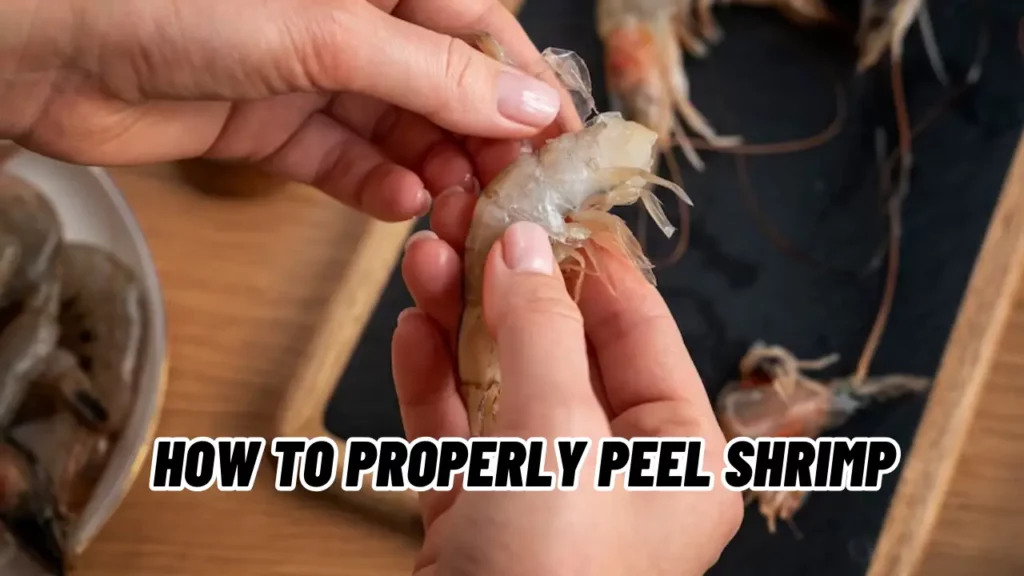Seafood is a highly nutritious food that is rich in vitamins and minerals. It is especially worth noting shrimp because they are a valuable source of protein. How to clean them correctly, read the review.
In all the variety of products that can be found on supermarket shelves, it is quite difficult to find something truly healthy and nutritious. You should pay attention to seafood to eat healthy and have good health.
So, you should definitely include shrimp in your diet. These aquatic inhabitants are marine orderlies and represent protein in its purest form. Omega-3 polyunsaturated fatty acids and high-quality protein are abundant in this product. In addition, shrimp are a valuable storehouse of vitamins and minerals. They contain large amounts of phosphorus, sodium, calcium, and iodine.
However, the process of cleaning shrimp is not always without difficulties. We tell you how to properly peel shrimp and make this process as easy, simple, and fast as possible.
General recommendations
The fact that you have never peeled shrimp yourself is not a reason to refuse to buy them. Of course, stores and supermarkets will already do most of the work for you, but if you can buy unpeeled sea shrimp, don’t hesitate. Don’t be afraid to clean them in your home kitchen. This process will not take much time and effort if you know a couple of methods and valuable secrets.
There are two main ways you can clean shrimp. So, you can do this with your hands or kitchen scissors. Choose any option convenient for you.
A wide variety of dishes can be prepared from shrimp. Combine them with other seafood, use them as an independent dish, or add them to salads and soups. Shrimp can be fried, steamed, or baked. You should not deny yourself the pleasure of tasting delicious seafood. You just need to learn how to handle them correctly.
Related: 10 Folk Ways to Use Onions for Many Diseases
How to Peel shrimp by hand
1. Remove the head and legs
First of all, you need to remove the head and legs of the shrimp. This is very easy and simple to do. Tear off the head by lightly squeezing it with your fingers. Gather the legs into one bun and pull. Moving away should be easy for them. Using a knife will help you remove any parts that are hard to remove.
2. Remove the shell

Next, we move on to the shell. At first, this may seem much more difficult, but it is not. Start from the head and slide your fingers along the entire shell, separating the plates one by one. Pull out the shell with extreme care to keep the shrimp carcass intact.
3. Remove or leave the tail
Do as you please with the shrimp tail. It can be left as a kind of decoration. The essence and usefulness will not change from this. So, a ponytail can be useful for preparing sushi or rolls. It looks very impressive on the dishes that you serve on the table. However, it is more convenient to eat shrimp when unavailable. It’s a matter of taste – it’s up to you to decide.
How to Peel Shrimp Using Kitchen Scissors
1. Remove the shell
If you have already removed the head and legs, it’s time to move on to removing the shell. This can be done not only with your hands but also with kitchen scissors. This method will help you perform this action as carefully as possible. Take scissors and make a light cut from the head side in the middle of the shell. Slowly work your way straight to the ponytail. Then, carefully remove both sides of the shell. The tail can be left or removed as desired.
2. Make a cut
Make a long, shallow cut along the back of the carcass using a regular kitchen knife. Do not press the knife too hard. The cut should be light and not deform the carcass. The approximate size is half a centimeter. You will see a dark stripe. This is the stomach or intestines of the shrimp.
3. Carefully remove the intestinal vein
Now remove the intestinal vein. This can be done by picking it up with the tip of a sharp knife. Lift the vein slightly and remove it with your fingers. Try to remove it completely and not in small pieces. Check to see if the shrimp has a second intestinal vein. As a rule, they are located on the stomach. If found, it should be removed in the same way as a vein on the back.

